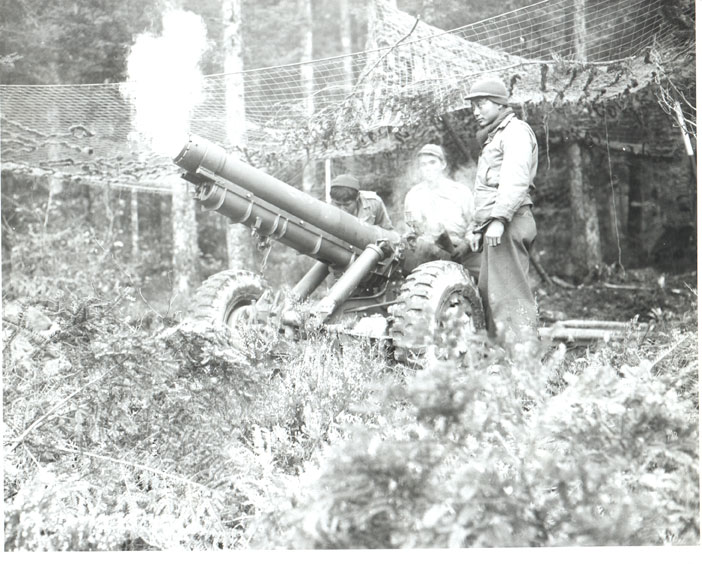
Combat Team of Cannon Company, fired from their new position in the woods. 442 Regimental Combat Team. La Houssiere Area, France. November 4, 1944. Courtesy of the National Archives and Records Administration.
Two 105mm, short-barreled guns were assigned to each of the three battalions in the regiment. Unlike field artillery guns, which were used against broader areas and for large, distant targets, those of Cannon Company were aimed against specific targets up to about 3,000 yards away. The company thus provided close-range support for the riflemen fighting at the front. Technical Sergeant Wally Nunotani explained: “We fired the same size shell, which was the 105mm, as the 522nd Field Artillery. The only thing is… we didn’t have the range because of the short barrel. Sometimes you could even see the shell going.”2
With the smaller guns, they also were also able to maneuver into position more easily and more quickly than the Field Artillery with their larger guns.The smaller guns also required fewer men to operate them. Cannon Company did not need a fire direction center for their team, as did the Field Artillery. The Cannon Company team in fact comprised just a radioman and an officer, who served as forward observers and directed the gunners. Sgt. Nunotani described the observers as “right up there with the troops!-because they had to direct fire for us, tell us where, when to fire… and sometimes they [made] us happy when they said, ‘Hey, good shooting, right on!'”3



